► Kia’s biggest SUV tested
► Choice of petrol-electric hybrid or diesel
► Prices range from £38k to £47k
This is the fourth generation Kia Sorento. If you need your memory jogging, this is the biggest SUV Kia sells in the UK, offering seven-seater practicality. It’s available in with a hybrid system – because it’s 2023 – and there’s a host of other changes. But is it any good? Keep reading to find out.
What’s new?
Hybrid powertrains. The Sorento is available from launch with a self-charging hybrid, combining a 1.6-litre four-pot petrol to a 44.2kW electric motor and a 1.48kWh battery. Badged 1.6 T-GDi HEV, the combined power is 226bhp and 258lb ft of torque.
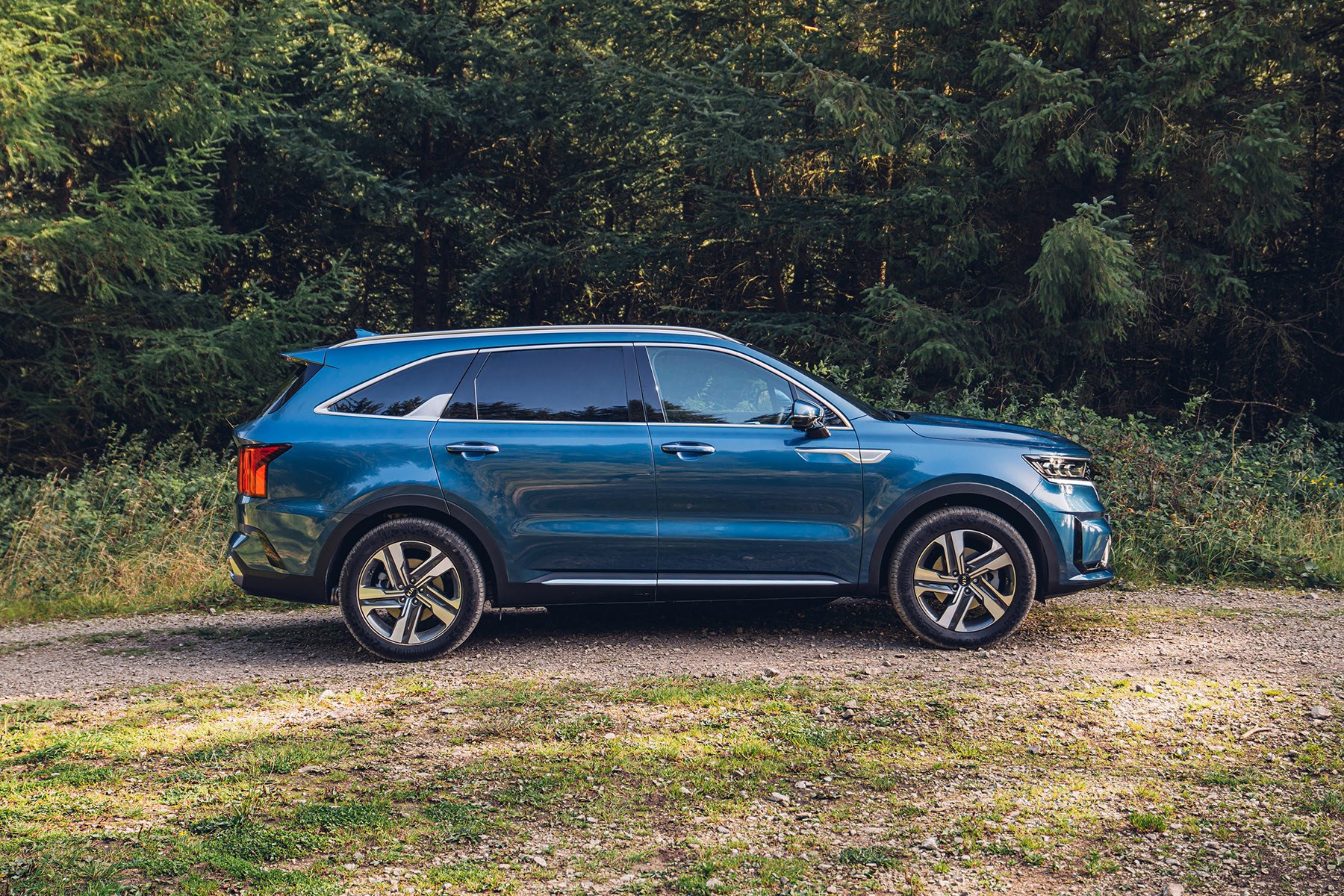
It takes 8.7 seconds to get from 0-60mph and top speed is 119mph. Claimed fuel consumption ranges from 38.2-40.9mpg, but our first drive saw a slow climb towards the mid-30s.
It wasn’t long ago when the favourite would be the diesel, but now, the expected winner is the entry-level 2 with this hybrid setup, thanks to CO2 emissions of 158g/km.
In fact, most of the Sorento’s line-up – consisting of 2, 3 and 4 models – is fitted with this engine, while the diesel sits on its lonesome in mid-range 3 spec.
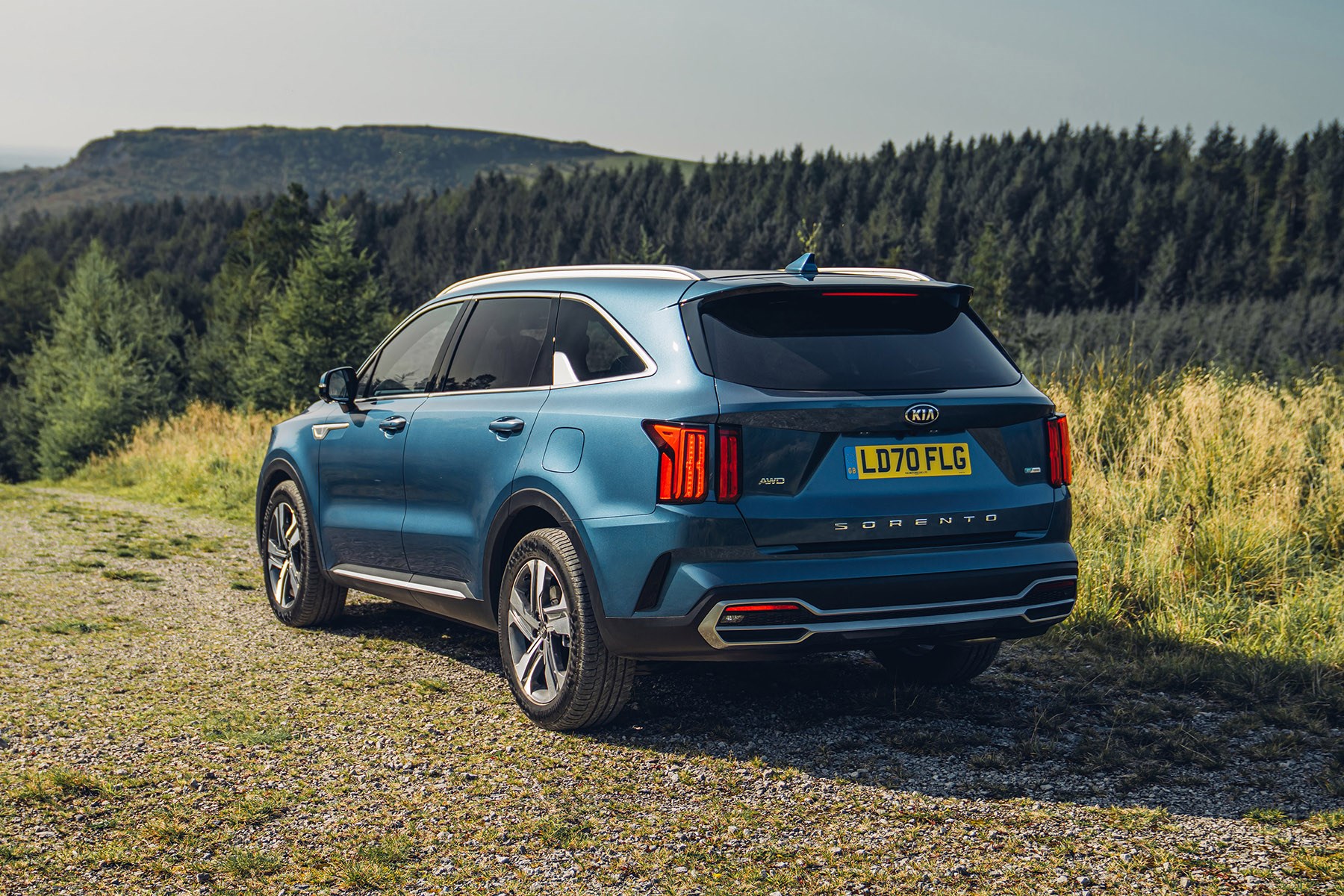
Speaking of which, the do-it-all, tow-friendly diesel is the familiar 2.2-litre CRDi unit with 199bhp and 325lb ft of torque. It takes 9.1 seconds to get from 0-60mph and has a top speed of 127mph. Claimed fuel consumption is 42.2mpg with CO2 output at 176g/km.
What’s also improved in the new Sorento is the towing capability over the last diesel model, with a braked towing weight of 2,500kg – up from 2,000kg over the outgoing model, although the hybrid’s capacity is lower, at 1,650kg.
A plug-in hybrid model arrives later this year which uses the same petrol engine, but has a more powerful 66.9kW electric motor and 13.8kWh battery. Power climbs up to 262bhp but torque remains identical at 258lb ft. Electric-only range is expected to be above 30 miles, but this and CO2 emissions are yet to be confirmed.
What all Sorentos come with, however, is all-wheel drive and a smooth-shifting automatic gearbox – six speeds for the hybrids, and an eight-speed DCT for the diesel.
Can you remember what the last one looked like? The car you see here is also sold in America, and the styling department certainly had them in mind: boxy profile, brutish front grille, but – unlike the stateside Telluride – less of a tank. Slightly.
In the eyes of yours truly, even the taillights resemble two-thirds of a Mustang’s rear cluster on either side.
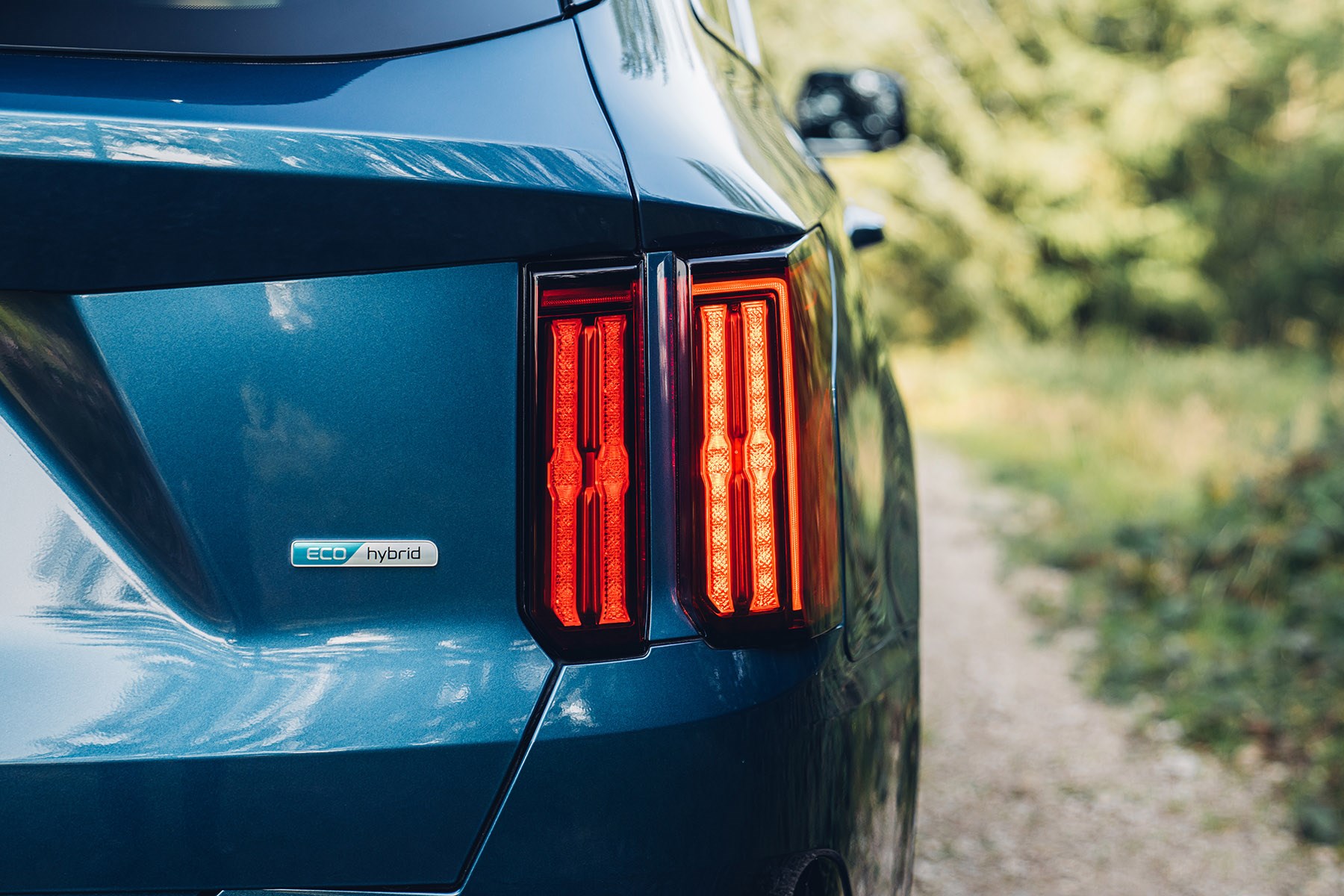
In terms of rivals, a low-spec Sorento competes with a Peugeot 5008, Land Rover Discovery Sport, and the clearly-separated-at-birth duo of the Skoda Kodiaq and SEAT Tarraco. Oh, and the highly forgettable Volkswagen Tiguan Allspace.
Go for a higher-spec and there’s the equally pricey Mercedes-Benz GLB and Hyundai Santa Fe, too – which might also present the Sorento’s biggest problem – would you spend over £40k on a Kia? The Stinger GT, maybe, but on a sensible SUV? In terms of monthly finance, that’s more than £400 per month.
What’s it like to drive then?
We’ll start with the hybrid. The electrical assistance at low revs is very welcome, disguising this ‘small engine, big car’ scenario quite well around town. This is thanks to a well-calibrated throttle response that’s sharp enough from stationary, but not enough to be neck-jerking for the six other occupants.
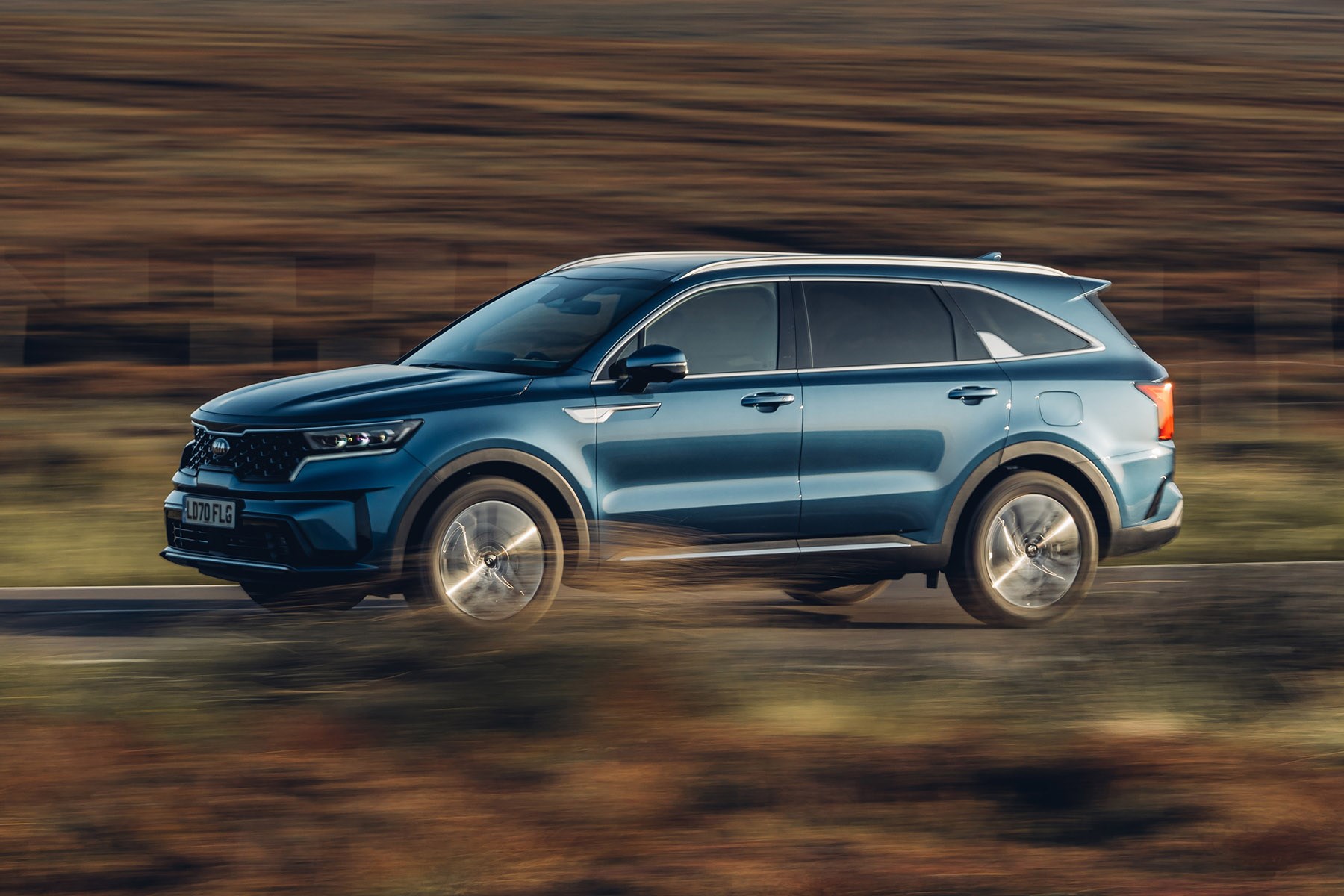
Once you leave town, however, it starts to fall apart the faster you go. You can gently cruise up to the national speed limit with little fuss, but once the pressure is on – whether it’s to overtake or get up to speed on a motorway slip road – this engine will be throwing a tantrum quicker than a sleep-deprived child; there’s no escaping from those four little cylinders having to deal with a two-tonne kerb weight.
It’s not glacial by an respect, and you won’t need to plan too far ahead when there’s a couple of you on board, but once at full capacity, you might want to crank up the air conditioning afterwards.
The diesel instantly feels like a better match with its high torque output and relaxed power delivery, but for those who potter around town, there is a case for the hybrid. We’d hold out for the plug-in when it arrives later, though, for that beefier electric motor.
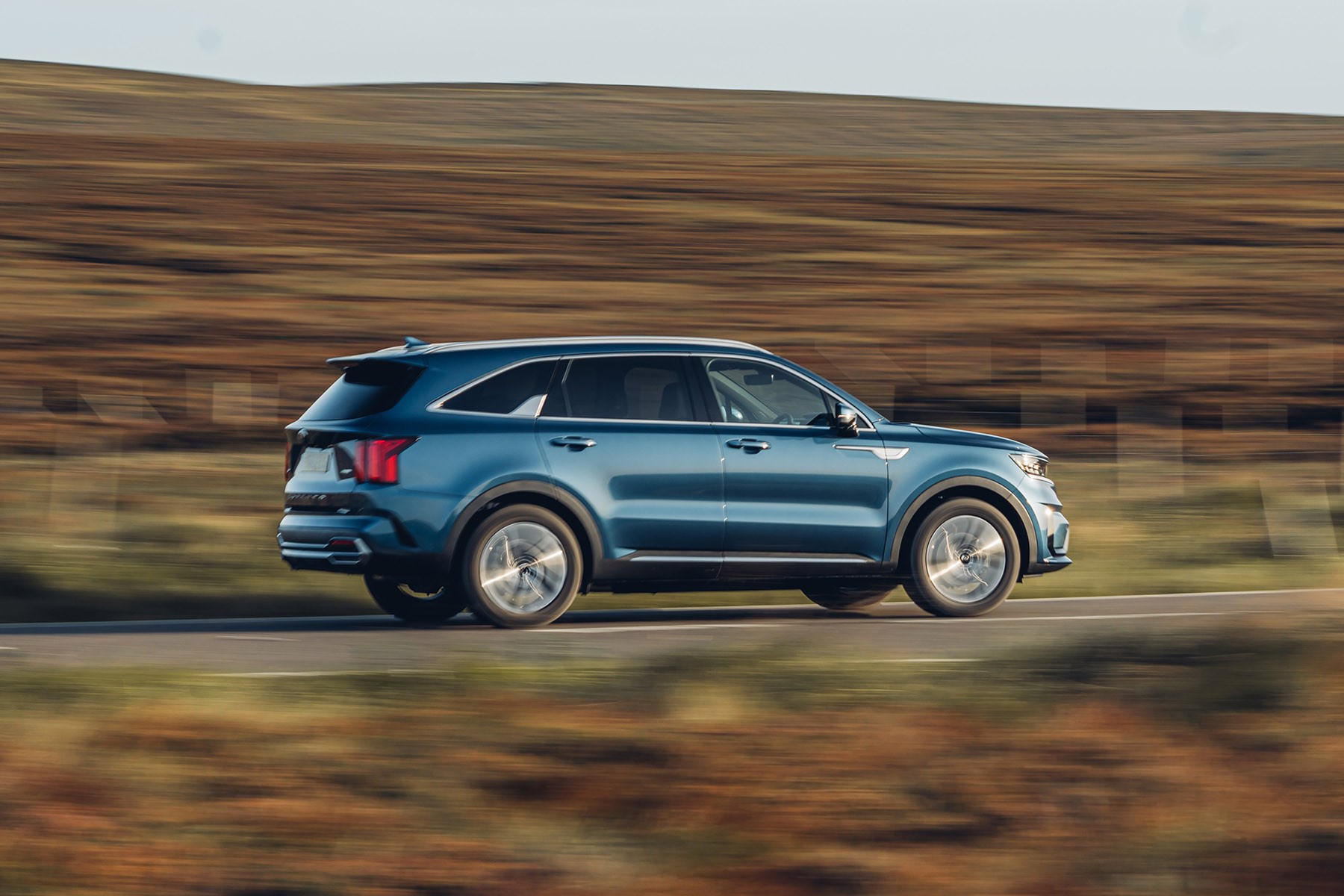
The diesel is otherwise hushed and smooth, sending very little vibration into the cabin and with just a hint of turbo whistle when worked hard. It can sound gruff at higher revs, but it otherwise deploys it’s torque well from 2,000rpm.
Both of these engines suffer from a brief delay as the gearbox wakes up for that burst of acceleration but the diesel’s biggest plus point is the sustained torque delivery when you need to get going – the hybrid can leave you floundering when the electrical assistance has gone.
Easy to drive, chassis set for comfort
Considering the 4,810mm length and 1,900mm width of the Sorento, it’s very easy to pilot. In short, the Sorento doesn’t feel like a tank.

The controls are easy to use without being completely numb, and although the brake pedal in the diesel is extremely light and highly assisted, the hybrid has a reassuring amount of resistance.
The steering wheel is a nice size with consistent weighting and, more importantly, it’s responsive enough for you to pilot through small town roads without feeling like you’ll scrape one of those side panels.
Besides, the blind-spot view monitor means you have the digital cockpit show you a camera view of the nearest kerb every time you indicate. Before you know it though, you’ll be glancing at that screen at every bend to see if your rear wheel has hit the imaginary apex.
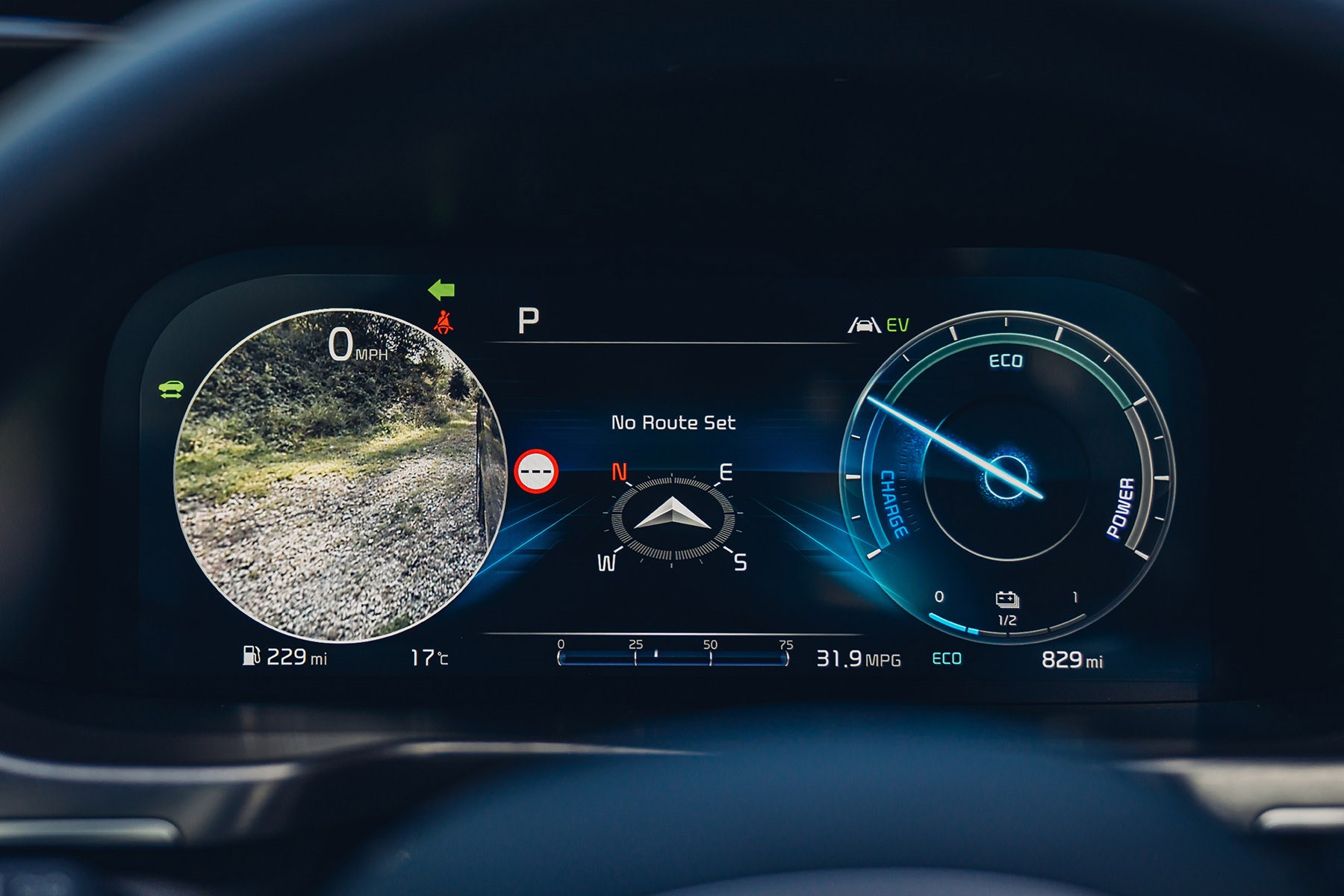
If you’re hoping the Sorento is going to be sporty, this feature is as close as it gets. Sure, it can be a little distracting, but at least it’ll encourage certain drivers to use their indicators more.
Trying to drive it like you stole it is pointless and not only will the car be unhappy, you’ll have to face the potential wrath of six angry passengers as well, so it’s best to drive it in a relaxed manner.
The chassis setup is firm enough to stop it from wallowing side to side like the old model, but not enough to be jolting the occupants around. It’s akin to a Skoda Kodiaq in terms of balance – if you want something more nimble, look towards the Mercedes-Benz GLB. If you want a luxurious ride quality, the facelifted Discovery Sport is the way to go.

The low speed ride is comfortable on all models, so bigger wheels aren’t an issue. Unsurprisingly the 2 is the most forgiving with its 17-inch bagel-profiled tyres, while higher-spec models on 19-inch items are a little firmer when dealing with bigger bumps, even if they feel slightly better controlled. Road noise also remains quiet.
There are plenty of drive modes to choose from: all selected by a rotary dial arranged in a similar fashion to Land Rover’s Terrain response. It’s not as tactile to use, but you do get a choice of Eco, Sport and Smart (plus an additional Comfort mode on the diesel), which adjusts throttle and steering sharpness. Sport brings regenerative braking, while Eco lets you coast. Off road modes include Snow, Mud and Sand.
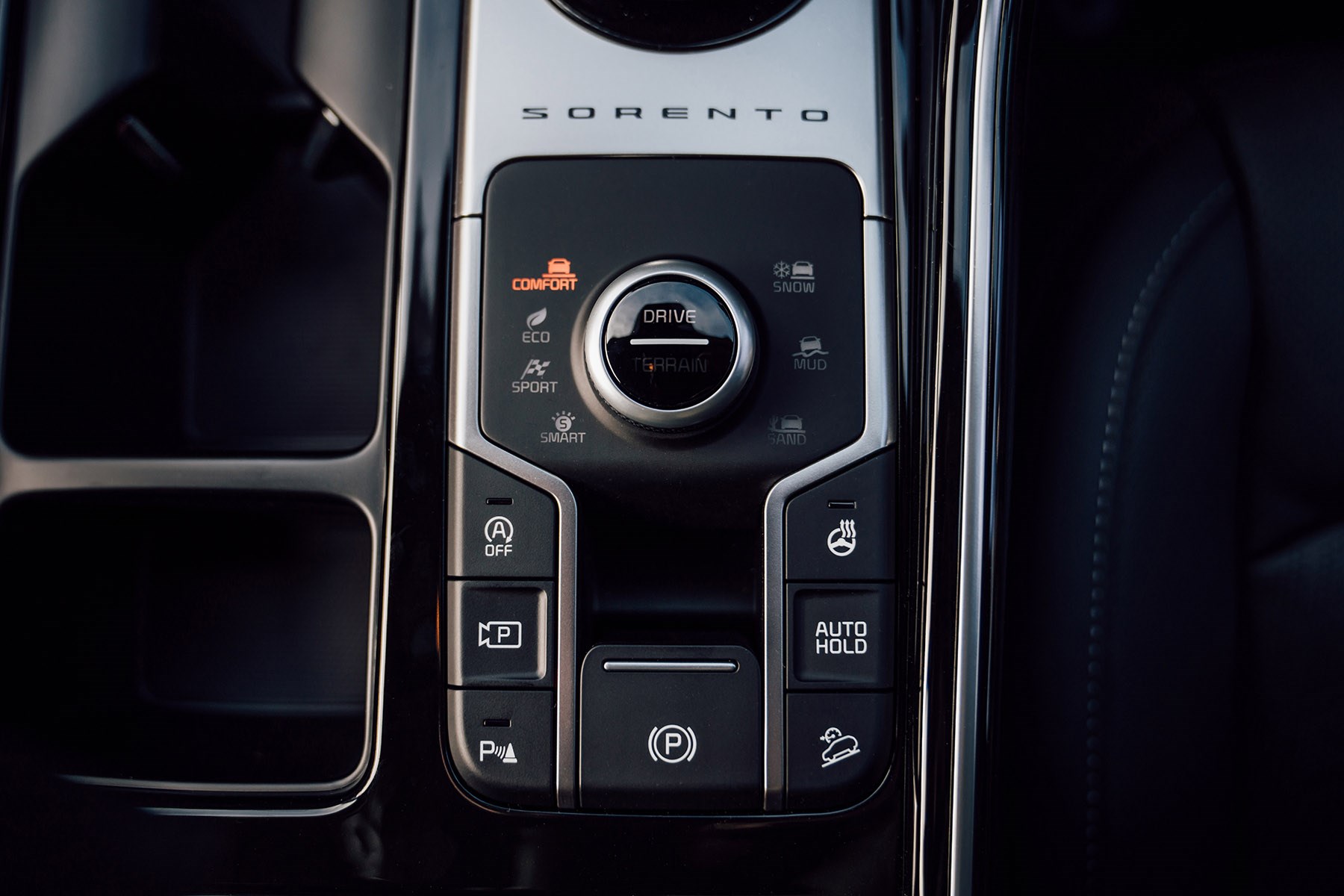
Quirks? The turning circle’s quite big and the spring-loaded rotary gear lever needs a firm twist when switching between reverse and drive, otherwise you awkwardly have to nudge through neutral each time.
Smart, functional interior
Anyone who’s been in a Kia will be instantly familiar with the layout of the touchscreen and steering wheel buttons, but the tech and design is a huge leap over the last generation.

It’s functional, modern, with a good mix of soft-touch plastics and brightly coloured highlights and textured trim on the dash. It’s not particularly luxurious, but it’s well built – perhaps a good thing if you want to avoid spoiling your kids, or worrying about bits of trim getting scuffed and covered in food.
The 10.25-inch touchscreen on 3 and 4 models come with sat-nav, but there’s nowhere to place your hand as such, so it can be a little tricky to use. The touch sensitive shortcut keys on either the side are easy to miss, but at least you have rotary controls for the volume and for scrolling up and down the menus.
The climate control cluster isn’t too fussy, even if the less-frequently used touch buttons are a bit fiddly (haptic feedback would be ideal, but audio will have to do).
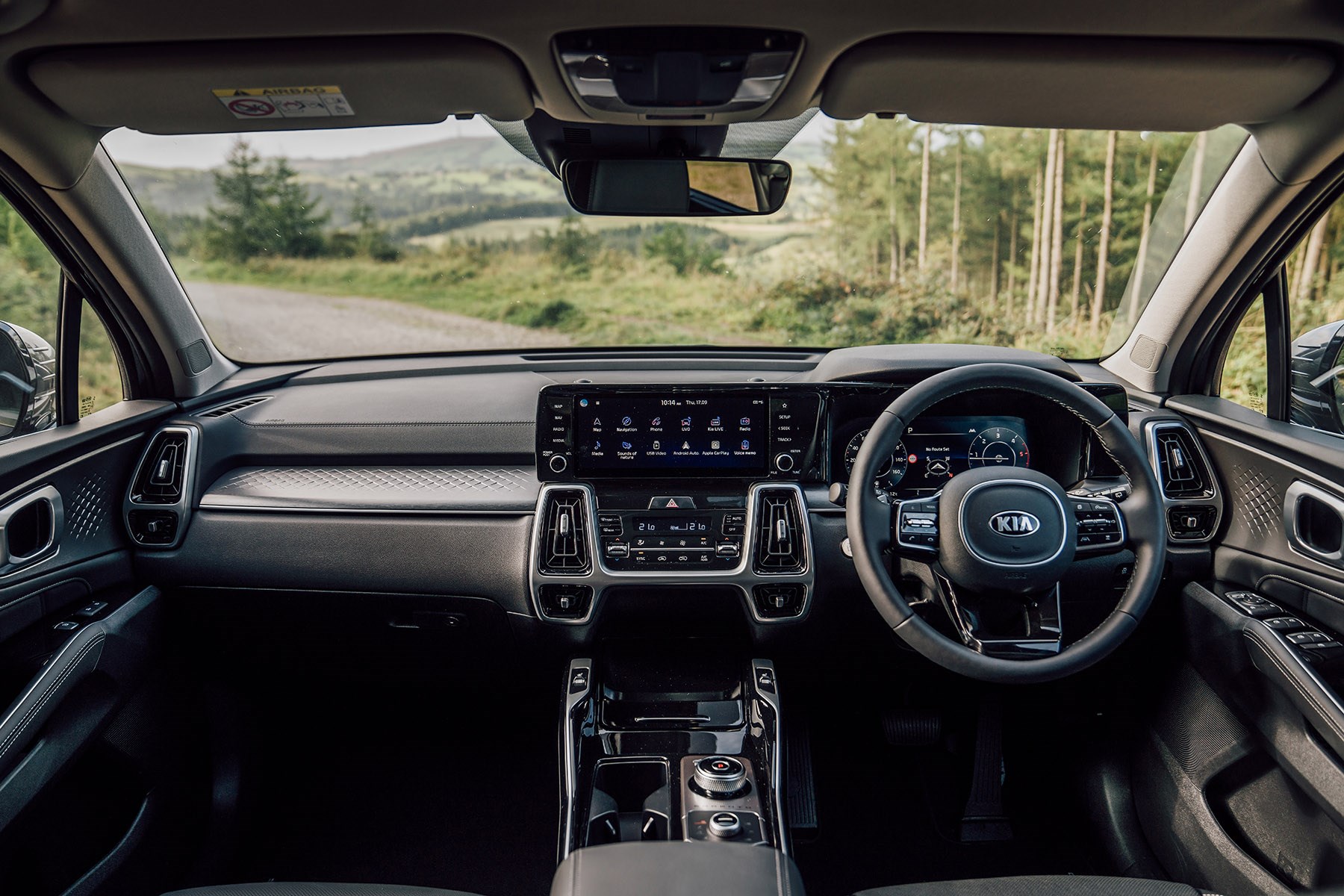
The 12.3-inch digital cockpit screen is clear, sharp and has great contrast, but there’s not a great deal of customisation or a full map setting for the nav. You might need to do a bit of digging to find the well-hidden sub menus for the driver assistance systems, too.
In terms of space, the new platform means there’s more legroom for those sat in the first two rows and improved headroom for those in the rearmost seats. Yes, it’s still best to place children in the third row, but those in the middle row won’t have their knees so bunched up when they compromise some of their legroom for those behind them. There’s certainly more space on offer than both a Mercedes-GLB and Discovery Sport.
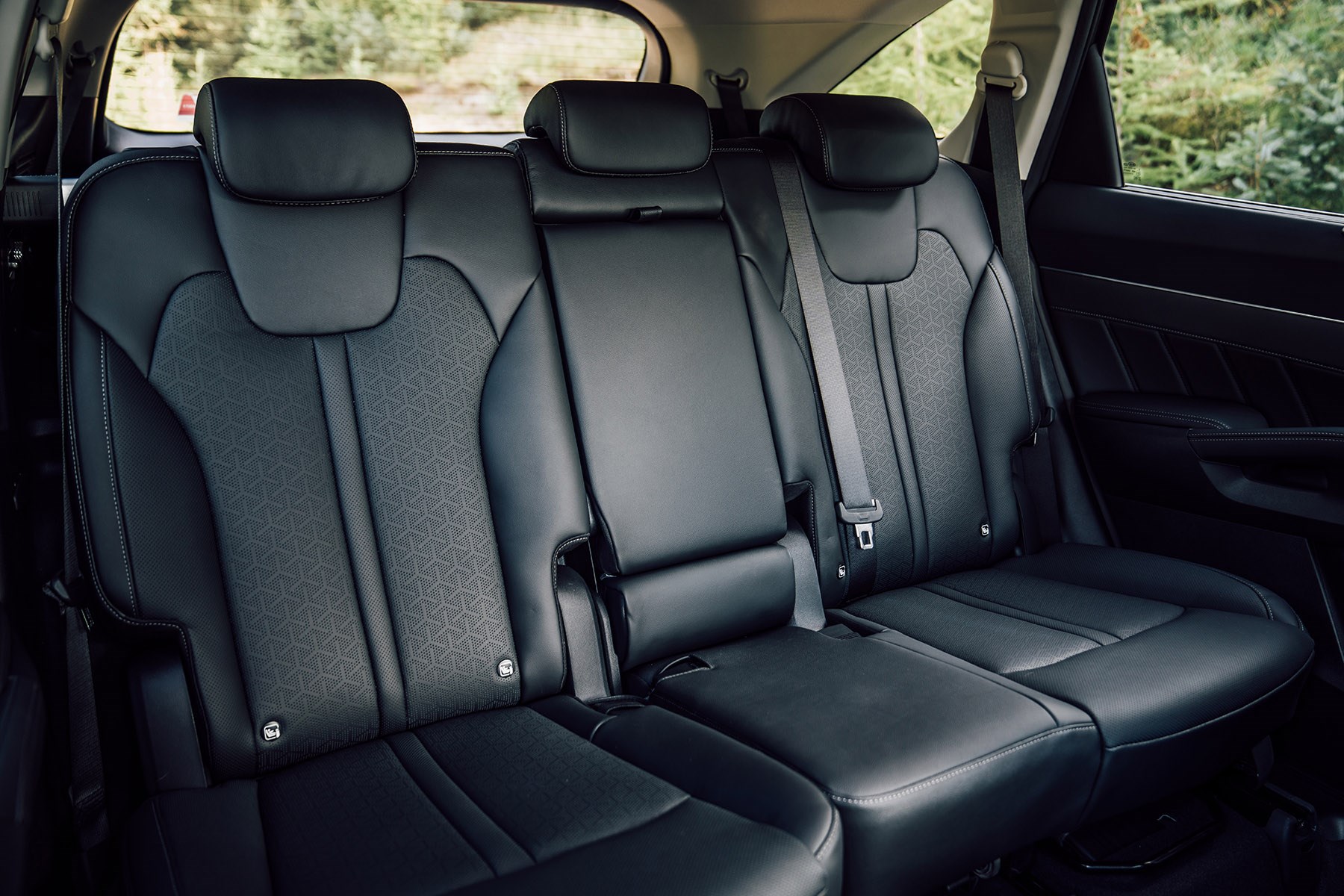
Boot space in five-seat mode ranges from 608 litres for the hybrid, with 616 for the diesel.
Verdict
It is what it is really, the 2020 Kia Sorento is a practical SUV that’s done well.
Badge snobs will wince at the £40k price, and it’s not the most exciting SUV in the world – a sportier GT-Line model isn’t currently on the cards – but how often do you buy one of these for that reason?
It certainly ticks a lot of boxes and seems ideal for those who simply need a practical vehicle to accommodate their active lifestyle, rather than be a highly fashionable one that merely suggests what they could be doing.